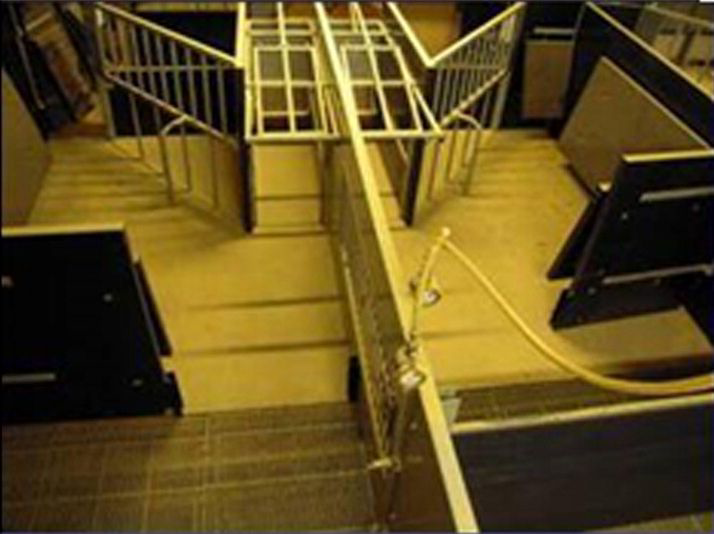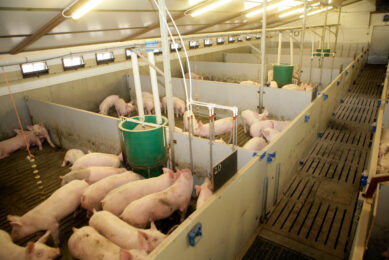Small farrowing nest beneficial for piglet survival

When choosing to keep sows loose during farrowing and lactating, a smaller-sized nest appears to be more protective for piglets than a larger-sized nest, English researchers have found.
The researchers, from Scotland’s Rural College and Newcastle University, experimented with 2 pen sizes that differ slightly from conventional pig production.
Large treatment and small treatment
They divided their set-ups as large treatment and small treatment. “Large treatment came down to 9.7 m2 in total with a nest area of 4.0 m2; a small treatment, same design but 7.9 m2 in total with a nest area of 3.3 m2. The nest floor was heated to either 30°C or 20°C from 48 hours before until 24 hours after farrowing.”
As for set-up, the researchers chose for a PigSafe pen, short for Piglet and Sow Alternative Farrowing Environment. It was developed with achieving the challenges of farrowing, lactating and minimising crushing for loose-housed sows in mind. “It has different areas to fulfil different biological and managerial needs, including a solid-floored nest area with piglet protection features (sloped walls, heated creep) intended for farrowing.”
Larger nest less protective
In the abstract of their publication in Applied Animal Behaviour Science, the researchers write: “The higher piglet mortality in the large treatment suggests that the larger nest size was less protective for the piglets and thus a smaller nest, within an adequate total pen size for differentiation of functional areas, would be recommended.”
They tested two hypotheses regarding pen design features to optimise farrowing location and improve piglet survival:
- Greater space would improve maternal behaviour; and
- A heated nest-site would be more attractive to the farrowing sow.
The researchers used 88 Large White × Landrace sows for the trial. Farrowing location analysis involved dividing the pen into 7 areas, they write. A place called ‘L1’ was deemed the safest location for the piglets to be born (i.e. in the nest, furthest from dunging area, closest to creep) and ‘L7’ the least protected (in the dunging area).
YOU MAY ALSO LIKE:
Winning one piglet per sow pre-weaning
Since the home farm of Detert Zuchttiere switched to Danish
genetics, extra attention was needed to keep the large amount of young piglets alive. Owner Carl-Josef Detert found a solution by installing balance floors in his farrowing area.
Piglets born in the nest area
Of all the piglets born 97% were born in the nest area. The majority of sows started farrowing in L1 (56%), with 39% of remaining piglets being born in this location.
The report states: “There was a significant Space × Temperature interaction for farrowing location with the small treatment in combination with 20°C achieving the most ‘L1’ births. Temperature had no significant influence on piglet survival. However space influenced mortality, with significantly greater live-born mortality when sows were afforded a larger farrowing space (in the large treatment this was 18.1% vs. 10.9% in the small treatment).”
No significant interactions for mortality
There were no significant interactions between space and temperature for either total mortality or live-born mortality, the scientists report. The overall design successfully promoted farrowing in the nest location, irrespective of nest size and floor temperature.
The researchers therefore concluded: “The higher piglet mortality in the large treatment suggests that the larger nest size was less protective for the piglets and thus a smaller nest, within an adequate total pen size for differentiation of functional areas, would be recommended.”
The research was carried out by Emma M. Baxter, Oluwagbemiga O. Adeleye, Mhairi C. Jack, Marianne Farish, Sarah H. Ison and Sandra A. Edwards.











